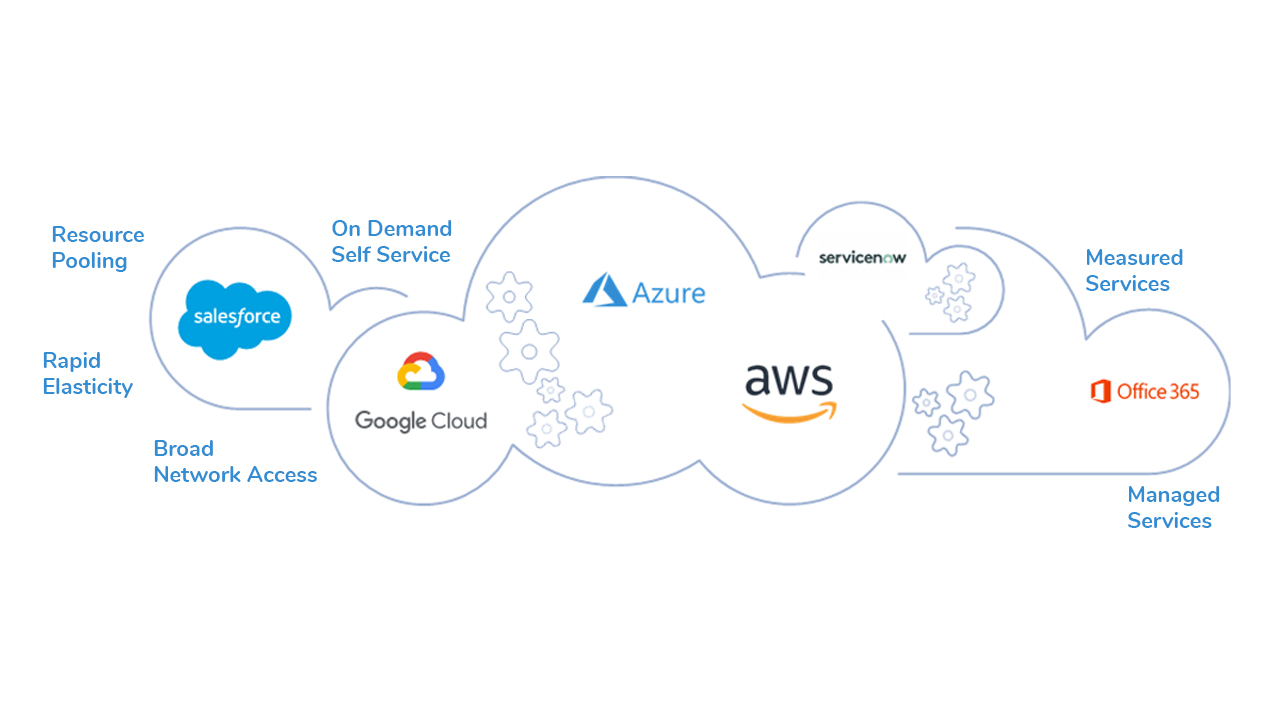Most Current Cloud Services Press Release: Developments and Industry Updates
Most Current Cloud Services Press Release: Developments and Industry Updates
Blog Article
Achieve Seamless Scalability With Cloud Provider
In the ever-evolving landscape of cloud services, attaining seamless scalability stands as a foundation for modern businesses seeking to stay adaptable and competitive. The mission for smooth scalability with cloud services unveils a globe of opportunities for those prepared to welcome the transformative power of vibrant resource administration.
Benefits of Cloud Scalability
Cloud scalability offers organizations the flexibility to dynamically adjust resources based upon demand, guaranteeing ideal efficiency and expense effectiveness. One essential advantage is the ability to range sources up or down rapidly in feedback to varying workloads. This dexterity allows companies to satisfy changing customer needs without over-provisioning resources, inevitably causing cost financial savings. Scalability likewise improves performance by making certain that systems can manage raised website traffic or work without experiencing downtime or slowdowns. By effectively assigning resources, organizations can maintain high levels of efficiency throughout peak times without unneeded expenses during quieter periods. Additionally, cloud scalability advertises technology and testing by allowing companies to easily check new concepts and scale them as needed. This versatility motivates a culture of continuous renovation and adjustment, making it possible for organizations to stay competitive in a rapidly developing market landscape. Inevitably, the advantages of cloud scalability prolong past expense financial savings to encompass improved performance, agility, and technology.
Secret Features for Scaling
Effective scaling in cloud services relies on key attributes that allow organizations to readjust resources dynamically based upon demand. One important function for scaling is elasticity, allowing resources to scale up or down in reaction to rising and fall work. This ensures that organizations can satisfy efficiency needs without over-provisioning sources. One more essential function is scalability, allowing systems to manage raised workload by adding resources flawlessly. This feature is vital for suiting development without endangering performance. Additionally, automation plays a crucial role in scaling by automating the provisioning and de-provisioning of sources based on predefined policies. Automation lowers human treatment, improves performance, and guarantees quick feedback to transforming needs. Surveillance and analytics devices are additionally vital for scaling, giving understandings right into resource use, efficiency metrics, and potential traffic jams. These tools make it possible for companies to optimize and make enlightened decisions resource appropriation for reliable scaling. In general, these essential features collectively empower companies to accomplish smooth scalability in cloud solutions.
Applying Auto-Scaling Methods
To properly maximize resource allotment and adjust to differing work, organizations need to purposefully carry out auto-scaling approaches in their cloud services facilities. Auto-scaling allows systems to immediately adjust the number of calculate sources based on real-time demand. There are numerous auto-scaling approaches that companies can use, such as anticipating scaling, which makes use of historical information to forecast future source needs, and responsive scaling, which reacts to current work changes.

Finest Practices for Scalability
For organizations aiming to improve their scalability in cloud services, applying best practices is crucial for optimal performance and resource management. One trick finest technique is developing applications with a additional hints microservices design. This technique breaks down applications right into smaller sized, independent solutions that can be deployed, updated, and scaled individually, permitting for higher adaptability and scalability.
Another important technique is using containerization technology, such as Docker or Kubernetes. Containers allow the product packaging of applications and their reliances right into isolated devices, making it easier to scale parts separately and release them continually throughout various settings.
Additionally, implementing automated deployment and infrastructure as code (IaC) can simplify scalability initiatives (linkdaddy cloud services). Automation devices like Terraform or Ansible aid in provisioning and taking care of resources successfully, lowering manual errors and making it possible for rapid scalability
In addition, checking efficiency metrics, setting up signals, and performing normal capacity planning are crucial techniques to guarantee aggressive scalability management. By adhering to these finest methods, organizations can achieve smooth scalability in their cloud services while enhancing performance and source application.
Surveillance Efficiency Metrics
When analyzing the efficiency of cloud solutions scalability, closely checking efficiency metrics is crucial for guaranteeing optimal functionality and resource allotment. By continuously tracking crucial efficiency indicators (KPIs) such as action times, resource, throughput, and latency application, organizations can acquire useful understandings right into the wellness and efficiency of their cloud framework. Monitoring performance metrics permits the early best site discovery of potential traffic jams or concerns that can influence scalability, allowing aggressive procedures to be taken to address them prior to they escalate.

Final Thought
To conclude, attaining seamless scalability with cloud services is essential for companies to enhance performance, improve advancement, and maintain high performance levels during peak times. By leveraging the advantages of cloud scalability, executing auto-scaling methods, using crucial functions such as elasticity and automation, and complying with finest techniques like application design and efficiency tracking, companies can efficiently scale their systems while making best use of resource use and performance.
The pursuit for seamless scalability with cloud solutions introduces a globe of opportunities for those ready to accept the transformative power of vibrant source monitoring.
Cloud scalability uses companies the versatility to dynamically adjust sources based on demand, ensuring optimal performance and price effectiveness. One more vital attribute is scalability, making it possible for systems to manage increased workload by adding sources seamlessly.For organizations aiming to boost their scalability in cloud solutions, executing finest techniques is crucial for ideal efficiency and resource monitoring.When analyzing the effectiveness of cloud services scalability, very closely monitoring performance metrics is imperative for guaranteeing ideal capability and resource allowance.
Report this page